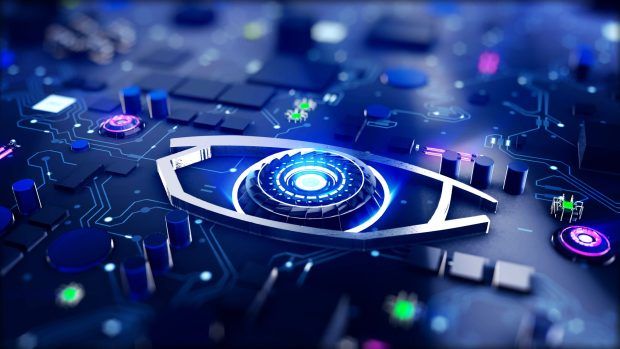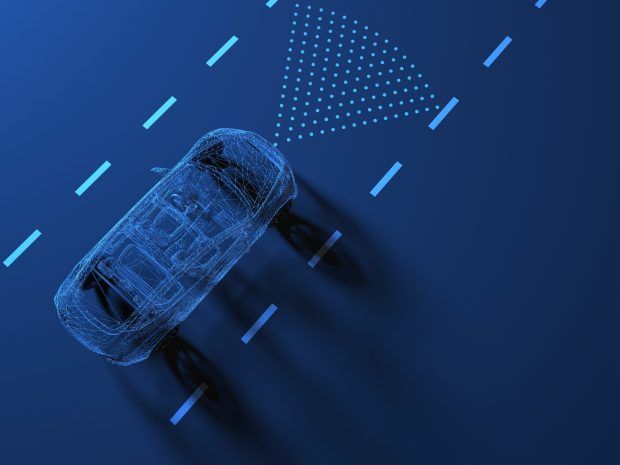Computer vision is a discipline of artificial intelligence that allows machines to see their environment like humans. Looking and seeing are different actions. The act of seeing also includes perceiving and understanding the image. The purpose is not just to receive the light reflected from the objects. This is the job of the eye. The brain’s occipital lobe, responsible for visual processing, processes and makes sense of the objects seen. Machines use cameras as their eyes. Computer vision models process thousands of pixels in images to perform the task of the occipital lobe. In short, the discipline of computer vision allows machines to understand what they see.
What is computer vision?
Computer Vision (CV) is an artificial intelligence discipline that develops techniques that enable machines to see and understand the world around them.
Computer vision is critical to innovations in many technology areas, including autonomous cars, facial recognition, and augmented reality. Computer vision has turned into one of the most important AI disciplines today due to the rapid increase in digital visual data. The increase in visual data also makes it easier to train computer vision algorithms.
Visual perception results from millions of years of evolution and is one of the most reliable abilities of humans. Visual perception is the ability of a 5-year-old child to understand that it is a dinner table after describing all the objects on the table one by one. Doing this for machines is an enormous challenge, and computer vision tries to provide them with this ability.
Computer vision also plays a critical role in achieving the goal of artificial general intelligence. Artificial general intelligence aims to give machines all the abilities of humans and more. But, this would not be possible without including another important feature of our intelligence, which is the ability to understand the objects around us, quickly identify them and give correct responses.
How does computer vision work?
Computer vision uses a small-to-large image processing technique. It starts with detecting and analyzing simple features like pixels and colors, then more complex features like lines and objects.
Understanding the emotion and context of images is simple for humans but very difficult for machines. Imagine looking at a photo of people running. Although the photo presents a static image, you can tell when people are running. For machines, images are just a collection of pixels. Unlike humans, machines cannot understand the context of an image and can only perceive pixels. Computer vision tries to bridge the semantic gap in this equation.
When light rays hit the retina of our eye, cells called photoreceptors convert the light into electrical signals. These electrical signals are then sent to the brain via the optic nerve. The brain converts these signals into images. This process continues to process electrical signals reaching the brain until the images become clear enough. How exactly the brain processes these signals and turns them into images is not yet fully understood. Moreover, how the brain performs many other functions remains a big question mark.

Computer vision works with neural networks and other machine learning algorithms that emulate the human brain. Researchers have excelled at mimicking algorithms to the human brain, and even sometimes, they can be surprised by the unexpected behavior of the algorithms they have created themselves.
What we do know is that computer vision is all about pattern recognition. Algorithms using machine learning techniques such as unsupervised learning are trained to recognize patterns in visual data. Many images need to be fed with the algorithm for the training process.
Let’s say you want an algorithm to identify dogs in photos. If you use the unsupervised learning technique, no photos need to be tagged for AI beforehand. Instead, the machine learns certain characteristics of dogs after analyzing thousands or millions of images. Machines can detect the defining characteristics of an animal or object. Although they still wouldn’t know the thing’s name, they could determine whether an unlabeled image contains it. Then you can tell that what the machine has learned is a dog, and a dog is an animal. Supervised learning speeds up the process of training algorithms. In this technique, images are tagged, and the machines also learn what they recognize.
Computer vision techniques
While an image recognition software application may use one of the following techniques, advanced applications such as a self-driving car may utilize many of the following techniques simultaneously:
- The object identification technique detects a specific object in an image. Advanced versions can identify multiple objects in a single image.
- Image classification is the technique of grouping images into categories. It is also called the process of assigning labels to images.
- Image segmentation is a technique used to examine an image separately by breaking it into parts.
- Pattern detection identifies patterns and continuities in visual data.
- Edge detection detects the corners of an object to identify the image’s components better.
- Feature matching is a pattern detection technique that matches similarities in images for classification purposes.
Computer vision use cases
Computer vision is used in many industries today. Using this technology, Instagram can automatically tag people in the photo, Apple groups photos, and Adobe improves the quality of zoomed images. While these are digital examples, there are many application examples of computer vision in the physical world. Let’s take a closer look at some real-world computer vision applications you may have come across:
Facial recognition
Some of the best use cases of computer vision are seen in facial recognition. Facial recognition, which became popular with the iPhone X model released by Apple in 2017, has turned into a standard feature on most smartphones today.
Facial recognition technology is used to identify people, as in Facebook, in addition to authentication on smartphones. On the other hand, law enforcement agencies worldwide use facial recognition technology to detect lawbreakers in video broadcasts.

Autonomous vehicles
Autonomous vehicles use computer vision for real-time image analysis. This technology helps self-driving cars make sense of their environment. Autonomous driving technologies are still in their infancy, and more R&D is needed to get them on the road safely.
Self-driving cars cannot operate without computer vision. CV allows autonomous vehicles to process visual data in real-time. Computer vision creates 3D maps for vehicles and objects identification and classification in autonomous vehicles.
Other important computer vision use cases in this area are vehicle and lane line detection and free space detection. As the name suggests, this technical tool detects open areas around the car. Free-range detection is useful when the driverless car approaches a slow-moving vehicle and needs to change lanes.
Medical imaging
Computer vision is used in the health sector to make faster and more accurate diagnoses and monitor disease progression. Doctors detect early symptoms of invisible diseases such as cancer using pattern detection models.
Medical imaging analysis with computer vision shortens the time for medical professionals to analyze images. Endoscopy, X-ray radiography, ultrasound, and magnetic resonance imaging (MRI) are some of the medical imaging disciplines that use computer vision.
By pairing convolutional neural networks with medical imaging, medical professionals can observe internal organs, detect abnormalities, and understand the cause and effect of certain diseases. It also helps doctors monitor the development of diseases and the progress of treatments.
Content-control
Social media networks need to review millions of new posts every day. It is no longer practical to have a content moderation team reviewing every image or video posted, so computer vision systems are used to automate the process. Computer vision helps social media platforms analyze uploaded content and flag those that contain objectionable images. Companies also use deep learning algorithms for text analysis to identify and block posts containing offensive text.
Surveillance
Video feeds are a solid form of evidence. They help detect lawbreakers and help security experts act before minor concerns turn into disasters. It’s nearly impossible for humans to track surveillance footage from multiple sources, but it’s an easy task for computer vision. Computer vision-assisted surveillance systems can scan live images and detect suspicious behavior.
Facial recognition can be used to identify wanted criminals and thus prevent crimes. The object identification technique we mentioned above can detect people carrying dangerous objects in crowded areas. This technique is also used to determine the number of available parking spaces in smart cities.





